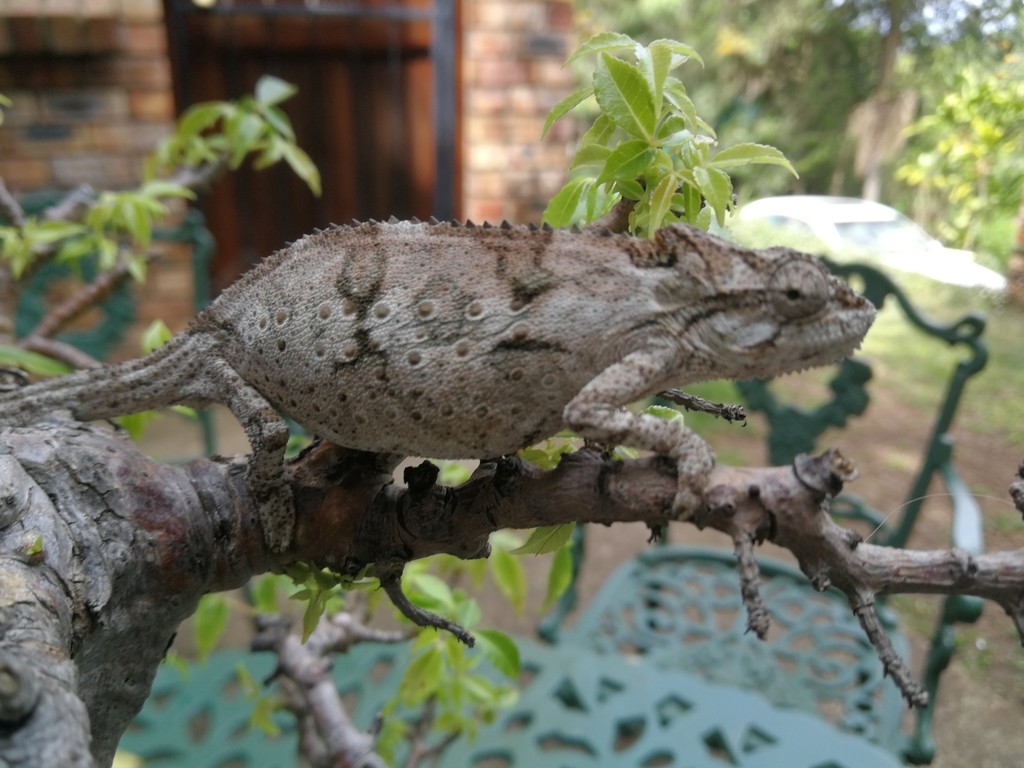Eastern cape dwarf chameleon
A species of South african dwarf chameleons Scientific name : Bradypodion ventrale Genus : South african dwarf chameleons
Eastern cape dwarf chameleon, A species of South african dwarf chameleons
Scientific name: Bradypodion ventrale
Genus: South african dwarf chameleons
Content
Description General Info
 Photo By aidendreyer , used under CC-BY-NC-4.0 /Cropped and compressed from original
Photo By aidendreyer , used under CC-BY-NC-4.0 /Cropped and compressed from original Description
The southern dwarf chameleon (Bradypodion ventrale) occurs in the Eastern Cape, South Africa. It is also known as the eastern Cape dwarf chameleon. It is a relatively large species of dwarf chameleon, reaching lengths of 14Â cm. It has a very prominent casque on the back of its head and a long, beard-like throat crest. It lives in dense thickets and shrub, and is usually very difficult to spot because of its colouring. It adapts very well...
General Info
Lifespan
5-8 years
Diet
Eastern cape dwarf chameleon is primarily an insectivorous species, having a dietary preference towards ants and termites. It employs its long, extensible tongue to patiently extract these insects from crevices and barks, making it a significant contributor in managing insect populations in its habitat.
Appearance
Eastern cape dwarf chameleon is a chameleon with a moderately elongated body covered in lumpy, granular skin. Adults typically achieve a length of 15 cm. The primary color is light brown, but it can change color, usually only varying within shades of green and brown. Some individuals have a lateral stripe. Males often have a raised rostral process, more prominent gular crest, and brighter colors than females. Younger eastern cape dwarf chameleon are typically darker, with more vivid contrast.
Behavior
Eastern cape dwarf chameleon is predominantly arboreal, spending most of its life in trees. It exhibits a slow, deliberate movement, indicative of its energy conservation. Solitary in nature, it expresses non-vocal communication through color changes. Its territorial behavior includes visual displays and passive-aggressive encounters. Its behavior discloses an adaptation to living in high-canopy forests, deploying distinctive camouflage for survival.
Population
Stable
Scientific Classification
Phylum
Chordates Class
Reptiles Order
Lizards and snakes Family
Chameleons Species
Eastern cape dwarf chameleon